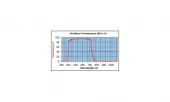Description
Hot and Cold Mirrors are essential optical components designed to manage light and heat in various applications. These mirrors are crafted with precision to either reflect or transmit specific wavelengths, making them invaluable in environments where temperature control and light manipulation are crucial. The use of high-quality Borosilicate glass ensures that these mirrors can withstand high temperatures, providing durability and reliability in demanding conditions.
Hot Mirrors are engineered to separate visible light from heat by reflecting infrared radiation. This capability is particularly beneficial in applications where heat needs to be managed without compromising the quality of visible light. The preferred angle of incidence (AOI) for optimal performance is 0º. These mirrors are designed to transmit visible light within the 420-700nm range while reflecting infrared light in the 800-1000nm range, achieving a reflection rate of over 95%.
Cold Mirrors, on the other hand, are designed to reflect visible light while allowing infrared radiation to pass through, effectively removing heat. This makes them ideal for applications where visible light needs to be maximized while minimizing heat. The optimal AOI for cold mirrors is 45º, with a transmission range of 800-1200nm and a reflection rate of over 95% for visible light in the 400-700nm range.
Both hot and cold mirrors are available in various sizes and configurations, with the option for custom designs to meet specific requirements. Their dielectric multilayer coatings ensure high performance and longevity, making them a valuable addition to any optical setup. Whether you need to manage heat or enhance visible light, these mirrors offer a tailored solution to meet your optical needs.
Hot Mirror MC0-25.4
Specifications
| Diameter: | 25.4 mm |
|---|---|
| Thickness: | 3.3 mm |
| Surface Flatness: | lambda/2 |
| Surface Quality: | 80-50 scratch-dig |
| Transmission: | 85 % |
| Reflection: | 90 % |
| Transmission Range: | 425 – 700 nm |
| Reflection Range: | 750 – 1050 nm |
Features
- High Transmission for Visible Range: Hot mirrors provide excellent transmission of visible light, ensuring clarity and brightness.
- High Reflection for Infrared: Effectively reflects infrared light, making hot mirrors ideal for applications requiring heat separation.
- Heat Removal: Designed to efficiently remove heat, protecting sensitive components in optical systems.
- Borofloat® Type Glass: Constructed with high-quality Borosilicate glass, allowing operation in high-temperature environments.
- Dielectric Coating: Features a durable dielectric multilayer coating for enhanced performance and longevity.
- Angle of Incidence (AOI): Available for AOI of 0º or 45º, providing flexibility for various applications.
- Custom Configurations: Mirrors can be customized to meet specific requirements and configurations.
- High Reflection for Visible Range: Cold mirrors are designed to reflect visible light efficiently.
- High Transmission for Infrared: Allows infrared light to pass through, effectively removing heat from the system.
Applications
- Projection & Display Systems: Manage heat and improve image quality by separating visible and IR light.
- Illumination Systems: Extend lamp and system lifetime by efficiently reflecting or transmitting heat.
- Optical Instruments: Provide controlled light management for microscopy, spectroscopy, and imaging.
- Laser & Photonics Systems: Enhance performance by isolating desired wavelength ranges.
- Medical & Scientific Devices: Used in diagnostic and illumination systems requiring precise thermal and optical control.
Frequently Asked Questions
What is a hot mirror?
What is the most common wavelength range for transmission through a hot mirror?
What is a cold mirror?
What is the most common wavelength range for transmission through a cold mirror?
What is the reflective range for a hot mirror?
Similar Products
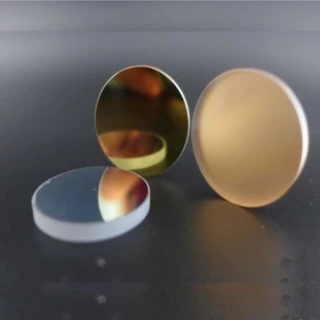
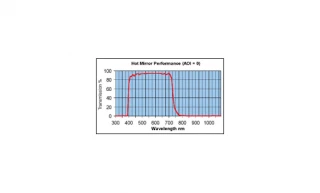
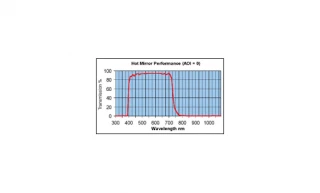
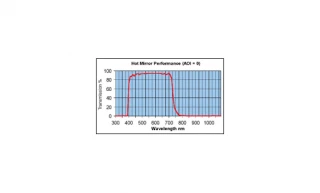
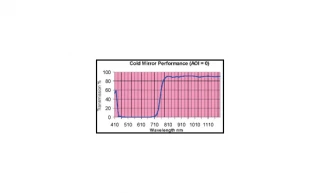
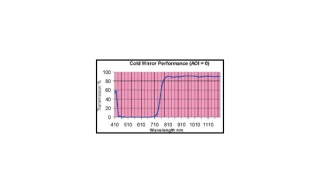


Your inquiry has been received.
Create an account by adding a password
Why create an account?
- Auto-complete inquiry forms
- View and manage all your past messages
- Save products to your favorites
- Close your account anytime — no hassle
